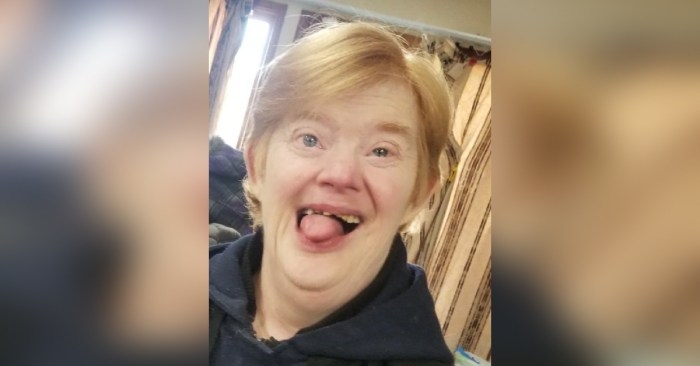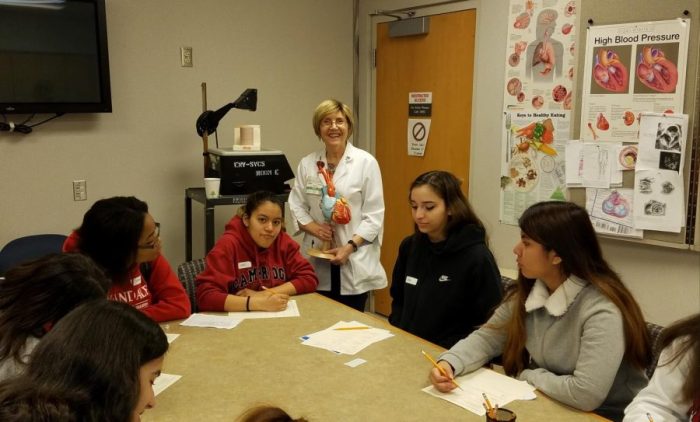Nurse darla is interviewing ms goodwin – Nurse Darla’s interview with Ms. Goodwin serves as a compelling case study, offering a detailed account of the multifaceted process of patient assessment, diagnosis, and care planning. Through the skillful application of evidence-based techniques and a compassionate approach, Nurse Darla effectively addresses Ms.
Goodwin’s health concerns, empowering her with the knowledge and resources necessary to achieve optimal well-being.
As the interview unfolds, Nurse Darla meticulously gathers information about Ms. Goodwin’s medical history, current symptoms, and lifestyle factors. This comprehensive assessment lays the foundation for an accurate diagnosis and the development of a tailored care plan that aligns with Ms.
Goodwin’s unique needs and circumstances.
Nurse Darla’s Interviewing Approach: Nurse Darla Is Interviewing Ms Goodwin
Nurse Darla employs a patient-centered interviewing style that prioritizes building rapport and understanding the patient’s perspective. She utilizes open-ended questions that allow patients to express their concerns and experiences in their own words.
Open-Ended Questions
- “Can you describe how you’ve been feeling lately?”
- “What are your thoughts and concerns about your health?”
- “Is there anything specific that has been bothering you?”
Building Rapport
Darla fosters a positive and supportive environment by actively listening, showing empathy, and validating the patient’s feelings. She demonstrates a genuine interest in the patient’s life and circumstances, creating a sense of trust and openness.
Ms. Goodwin’s Health Concerns

Primary Health Concerns
- Chronic pain in the lower back
- Difficulty sleeping
- Fatigue
Medical History
Ms. Goodwin has a history of osteoarthritis and has undergone two back surgeries. She has also been diagnosed with fibromyalgia.
Current Symptoms
Ms. Goodwin reports constant aching pain in her lower back that worsens with activity. She has difficulty falling asleep and staying asleep, and experiences significant fatigue throughout the day.
Lifestyle Factors
Ms. Goodwin is overweight and has a sedentary lifestyle. She smokes cigarettes and occasionally drinks alcohol.
Assessment and Diagnosis
Assessment Methods
Darla conducted a comprehensive assessment, including a physical examination, review of medical history, and assessment of pain intensity and sleep patterns.
Diagnostic Criteria
Based on the assessment findings, Darla diagnosed Ms. Goodwin with chronic pain syndrome. The diagnosis was made according to the International Association for the Study of Pain (IASP) criteria.
Differential Diagnoses, Nurse darla is interviewing ms goodwin
Darla considered other potential diagnoses, including lumbar radiculopathy, spinal stenosis, and depression. However, these diagnoses were ruled out based on the patient’s symptoms and physical examination findings.
Care Plan Development

| Intervention | Goals | Expected Outcomes | Rationale |
|---|---|---|---|
| Physical therapy | Improve range of motion and reduce pain | Increased mobility and decreased pain intensity | To strengthen muscles, improve flexibility, and reduce pressure on nerves |
| Medication management | Manage pain and improve sleep | Reduced pain levels and improved sleep quality | To alleviate pain and promote relaxation |
| Lifestyle modifications | Reduce weight, increase activity, and quit smoking | Improved overall health and reduced pain intensity | To reduce strain on the back, improve cardiovascular health, and eliminate a pain trigger |
| Cognitive-behavioral therapy (CBT) | Address negative thoughts and behaviors related to pain | Improved coping mechanisms and reduced pain perception | To challenge unhelpful thoughts, develop pain management strategies, and promote self-efficacy |
Patient Education and Counseling

Patient Education Materials
Darla provided Ms. Goodwin with educational materials on chronic pain management, including information on medications, physical therapy, and lifestyle modifications.
Counseling Strategies
Darla used motivational interviewing techniques to encourage Ms. Goodwin to make healthy lifestyle changes and adhere to her care plan. She also provided emotional support and addressed Ms. Goodwin’s concerns and fears.
Importance of Patient Adherence
Darla emphasized the importance of Ms. Goodwin’s active participation in her care plan. She explained that adherence to the interventions would maximize the effectiveness of the treatment and improve her quality of life.
Follow-Up and Evaluation

Follow-Up Schedule
Darla established a regular follow-up schedule to monitor Ms. Goodwin’s progress and adjust the care plan as needed. Follow-up appointments were scheduled at intervals of 2 weeks, 1 month, and 3 months.
Evaluation Methods
Darla used a variety of evaluation methods to assess Ms. Goodwin’s progress, including pain intensity scales, sleep diaries, and patient self-reports.
Potential Adjustments
Based on the evaluation findings, Darla could make adjustments to the care plan, such as modifying medication dosages, increasing the frequency of physical therapy sessions, or incorporating additional interventions.
Detailed FAQs
What is the significance of building rapport with patients during an interview?
Establishing rapport fosters trust and open communication, enabling patients to feel comfortable sharing sensitive information that is crucial for accurate assessment and diagnosis.
How does a comprehensive assessment contribute to effective care planning?
A thorough assessment provides a holistic understanding of the patient’s health status, allowing healthcare professionals to tailor interventions and goals to their specific needs and circumstances.
Why is patient education and counseling essential in healthcare?
Patient education and counseling empower individuals to take an active role in their health management, meningkatkan adherence to treatment plans, and promoting long-term well-being.
